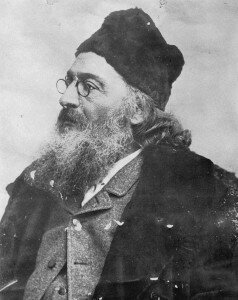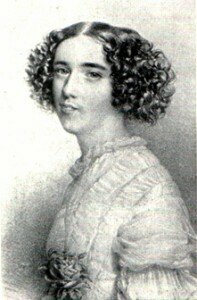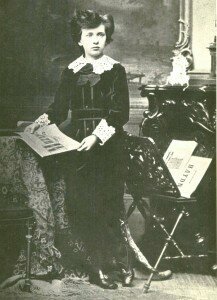
Ferruccio Busoni in 1913
Busoni was a child prodigy on the piano, and often toured with his parents; his father the clarinettist, and his mother, Anna Weiss (1833-1909), the pianist. He performed in their concerts and by the age of 12 had begun compositions for clarinet and piano for his parents. These included the Clarinet Suite, Op. 10, written in 1878, the Solo Dramatique, Op. 13, written in 1879, and a Clarinet Sonata (ca. 1880).

Fernando Busoni
Busoni: Clarinet Suite, Op. 10: I. Improvvisata (Sergio Bosi, clarinet; Ricardo Bartoli, piano)
The central Elegia provides a point of repose.
III. Elegia
As a contrast, the elegy is followed by a Danza campestre, a vivacious rural dance with a theme that appears to have not come from folksong but was written by the young Busoni.

Anna Weiss
The Solo Dramatique, Op. 13, is also for clarinet and piano, despite its ‘solo’ title. The piece is dated ‘2 February 1879, Bolzano.’ Busoni was in Bolzano, in the south Tyrol, to play 4-hand piano music in a concert with his mother. The key to the work is the ascending scale with which the work opens, and when you start to focus on the piano part, you realize that it, too, is a substantial part of the work, almost Brahmsian in its construction.
Busoni: Solo dramatique, Op. 13 (Ex Novo Ensemble di Venezia)
In the Clarinet Sonata, which he began in 1880 but not completed, was completed by the pianist Florian Feilmair, and provides dramatic roles for both the clarinet and the piano, starting from its bravura opening.
Busoni: Clarinet Sonata in D Major (completed by F. Feilmair): I. Allegro deciso (Benjamin Feilmair, clarinet; Florian Feilmair, piano)
Most of the works for clarinet and piano were written between 1875 and 1880, that is, when Busoni was age 9 and age 14.

Ferruccio Busoni, age 12
Busoni: Elegie (Rocco Parisi, clarinet; Gabriele Rota, piano)
His parents’ influence is clear in his early works for clarinet and piano. During these early years, before the age of 15, he also wrote works for piano, for string quartet, and for voice and piano, clearly using the forces available to a young composer to start to learn his craft. Nevertheless, aided by the nearness of a professional clarinettist, his contribution to chamber music and clarinet music, even as a child, is considerable.


